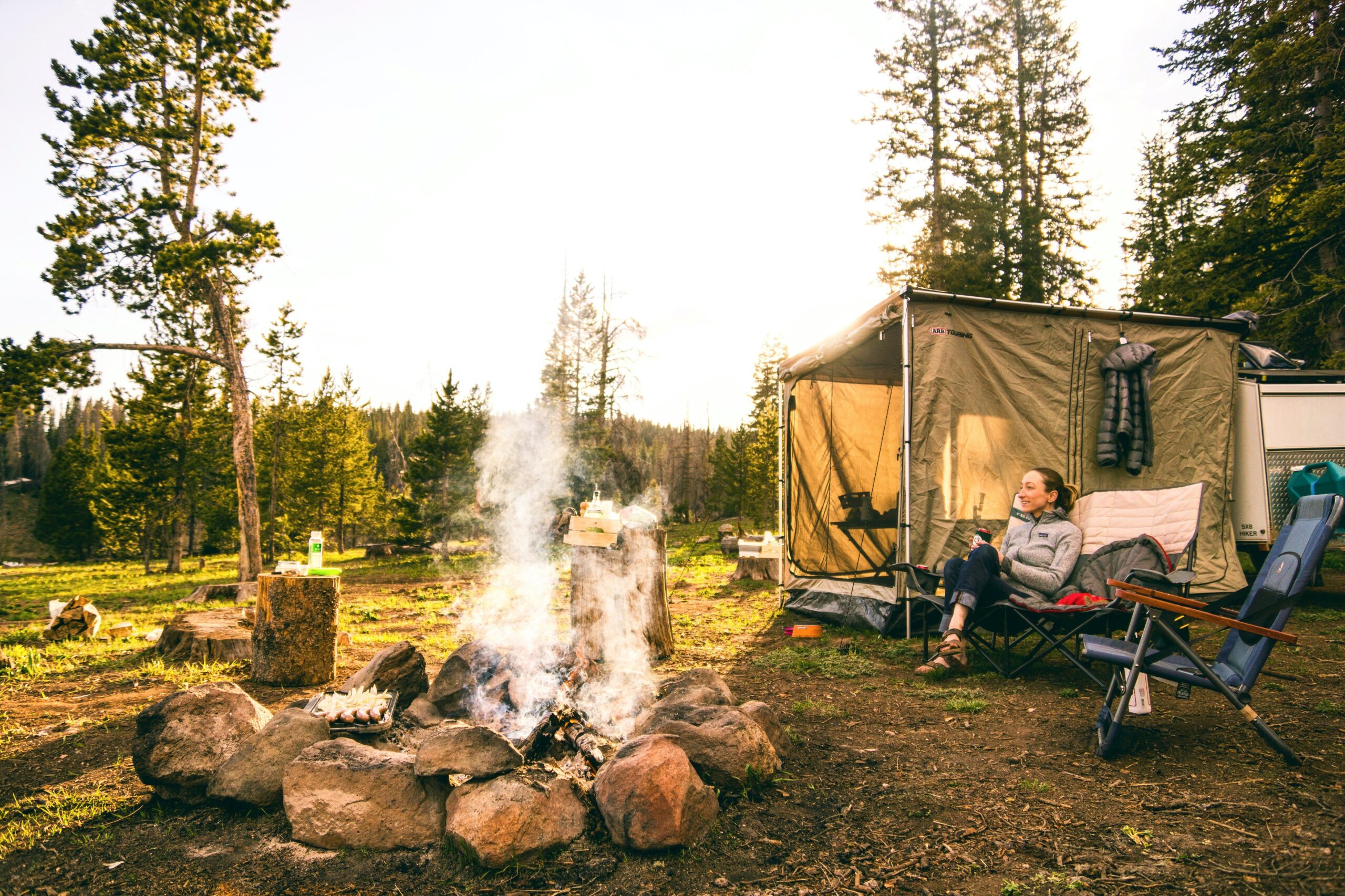Guest post by Jordan McDowell
Starting a fire is simple. But starting a responsible fire that protects both you from the cold and the environment from a wildfire? That’s a bit more difficult.
Whether you’re camping or simply enjoying a new fire pit in your backyard, make sure that you have all the information you need to keep your fire safe. Below are some practical (Smokey Bear approved!) tips on how to build campfires using existing pits and fire rings.
 Photo by Chris Holder on Unsplash
Photo by Chris Holder on Unsplash
1. Check Location Conditions And Requirements
The smallest of accidents, especially in the midst of unfavorable conditions, can easily lead to a wildfire. Take extra care if you’re camping in a dry area surrounded by tall grass or brush. And before you build a fire in a designated fire pit or ring, always check with the park, forest, or campground’s website to make sure there are no wildfire warnings or burn restrictions on campfires.
If everything checks out, your next to-do is to locate a fire pit or fire ring. Designated pits and rings are key to keeping your campfire contained. Make sure to clear the area around the campfire of any flammable materials, including kindling and wood meant for the fire. This way, if any embers escape, chances are low a wildfire will result.
A good rule of thumb is to keep 15 feet between your campfire and your tent. It’s tempting on a cold night, we know, but don’t leave your campfire burning while you sleep. If you can’t see the fire, it’s not safe for it to be burning.
2. Get the Right Tools and the Right Materials
Knowing how to build a campfire is a critical survival skill if you find yourself faced with an emergency situation. A durable fire starter, matches, or similar tools can help you easily light tinder once you’ve built your fire.
In addition to the materials you bring, you may also need to seek out materials where you are, such as tinder and kindling to start your fire and plenty of water to extinguish it. Before starting your fire, it’s a good idea to have a mix of dry branches and logs ready so you won’t need to leave your campfire to collect additional fuel.
3. Watch Your Fire AND Clean Up Afterwards
 Once your fire is started, it’s important to not leave it unattended. Make it your goal to maintain your fire by adding fuel a little bit at a time. It’s important your campfire doesn’t grow to more than three feet vertically or more than three feet in diameter.
Once your fire is started, it’s important to not leave it unattended. Make it your goal to maintain your fire by adding fuel a little bit at a time. It’s important your campfire doesn’t grow to more than three feet vertically or more than three feet in diameter.
When it’s time to pack up, make sure to fully extinguish your fire. First: pour lots of water on the fire, drowning all of the embers, and not just the red ones. Pour water on the fire until that hissing sound stops. Second: With a shovel, stir the wood ashes and wood remnants in the fire. If you see smoldering or red embers, drown the fire again with water. Third: Check to see if the fire is still hot. If it’s too hot to touch, it’s too hot to leave. Keep drowning and stirring to put the fire out cold.
Finally, don’t forgot this catchy saying: pack it in, pack it out. It is your responsibility to pack out everything that you packed in, including any trash.
Being safe and conscientious is essential to your safety and to the safety of those around you, whether it be people or the environment. For more fire safety tips, visit Smokey Bear’s website or head over to the prevention section of the State Foresters’ website.
Have questions for the author? Email Jordan McDowell at jordan.b.mcdowell@gmail.com.

